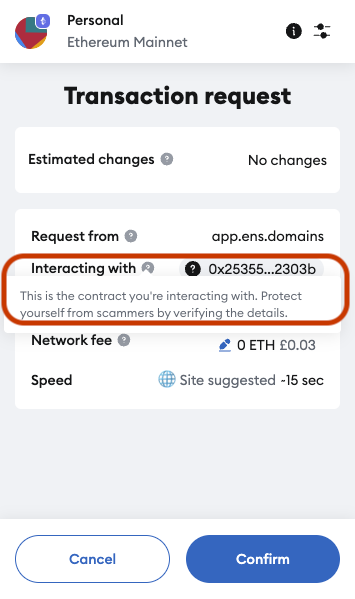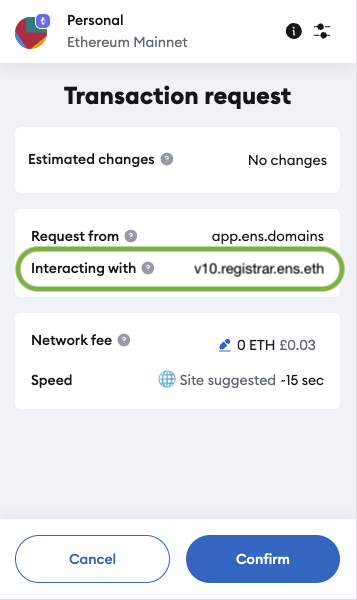Introduction
When users access websites, they expect to do it with a human readable DNS name. However, when interacting with web3 apps and signing transactions from their wallets, users are presented with meaningless smart contract hexidecimal addresses to sign.
This is wrong, and the Enscribe service has been created to address this issue.
Since their launch in May 2017, the ENS service set out to replace wallet and smart contract addresses with human readable names. However, for a reason unbeknownst to us, very few smart contract developers name their smart contracts.
In part this may be because their is limited support for them in wallets, but also its another thing that developers have do to after they deploy a contract.
Enscribe is here to change this. By providing a service that creates ENS records for contracts at deployment, we can change Ethereum and L2s from being full of anonymous contracts and instead them being labelled and named, providing greater transparency and trust in on-chain applications for users.
Web users don't have to deal with IP addresses, nor should Web3 users have to deal with hexadecimal addresses in apps.
TLDR; we believe the web3 experience should change so that instead of this:

Users see this:

We believe this is an important step forward in enhancing user-experience on the EVM and our contract deployment service is the first piece of infrastructure serving this purpose.
Learn more about Enscribe and ENS in the following sections.
📄️ What is Enscribe?
The Ethereum Name Service (ENS) protocol was created to allow users to replace hexadecimal Ethereum wallet addresses with human-readable names. However, ENS addresses are rarely used to refer to smart contracts.
📄️ What is ENS?
In the ever-expanding landscape of Web3, interacting with long, unreadable Ethereum addresses like 0x4cbe58c50480... is both error-prone and unfriendly. That’s where ENS — the Ethereum Name Service—comes in. It serves as the naming protocol of the decentralized web, providing human-readable names for Ethereum addresses, content hashes, smart contracts, and more.
📄️ Naming Smart Contracts
Naming a smart contract using the Ethereum Name Service (ENS) can be a complex process. Unlike traditional Ethereum accounts, assigning ENS names to smart contracts — especially setting their primary (reverse) names—requires multiple steps and a deep understanding of the ENS system.
📄️ Supported Networks
The Enscribe service is deployed on the following Ethereum Layer 1 and Layer 2 networks.